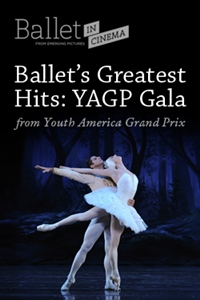 Margarita, (2012, Canada), part of the DC film festival and screened at the Goethe Institute, is a tale that pits the unknown history of the global South against its Northern neighbors, namely Canada. Margarita, is a 24 year old nanny from Mexico. She lives in a Canadian suburb with the family of; Gail and Gail’s common law husband, Ben and their daughter, Mali. Mali is 14 and really no longer in need of the constant care of a younger child. Ben and Gail, are currently undergoing the dignities of having their vehicle repossessed as well as the lively conversations between each other, of how they are going to survive financially with an overwhelming amount of credit and mortgage dept. It’s not clear what causes their debt as their daughter goes to public school and both parents work full time in well paying professions. They do have a large, well maintained house, with a hot tub, though no car. Since, both parents work full time and are busy with various other activities; it is Margarita who spends the time to love their daughter. The trouble though is; who is loving Margarita? Her girlfriend, Jane, does not want a full relationship, though Margarita wants to marry her. The increasingly cash strapped Gail and Ben decided to relieve Margarita of her employment with them, so they can save cash and Margarita, can, (in theory) go and live her own life; by returning to school and pursuing a profession other than being a nanny. There is a huge catch to Margarita’s liberation: she is an illegal immigrant. According to Margarita’s story, when she came to Canada at the age of 18, she did not speak English, and no one told her the proper immigration procedure until the 6 months had passed for her to file paperwork accordingly, and she became illegal. So, what is there to do? Margarita, receives a false identity card from Carlos, the Brazilian hot-tub repairman who has a crush on Margarita, but it becomes of no use once Margarita is hospitalized from a biking injury. The hospital informs the police of her immigration status and she is scheduled for deportation in six days. Within this time, the parents realize they do not know what they would do without Margarita. She is both mother and father to their daughter, and she is the only one in the family who can manage money properly. Gail and Ben also realize, they do not know anything about Margarita’s past in detail. Margarita’s friend Carlos, is the one who openly chastises her employers, for their cluelessness. Still, Gail and Ben are not all bad. It’s just that both are just so busy with their work, they have no home lives. Margarita is the one who successfully pushes their daughter to do better in math, and cares for all the household needs. It’s the parents’ lack of questioning toward Margarita that reflects a general ignorance on the part of the North as to what the majority of fates in the global South are like. Though, the parents’ selfishness, catches up to them, and once they realize the full impact Margarita has on their lives, they make some incredibly comical and warm hearted attempts to keep her. Though, the acting takes time to warm up this is definitely a film worth seeing. It brings to light the human, financial and emotional complexities of immigration debates. These arguments are portrayed with humor in a manner one could envision actually happening in real life. By Sarah Bahl  "Ballet's Greatest Hits–YAGP Gala" played at AFI Silver Theater last Sunday, is remarkable for bringing to life what people love most about ballet. The still shots of dancers perfectly embodied in mid-air remind one of how perfectly graceful these athletes are. Their grace brings an ethereal sense of power to a long standing dance profession which will hopefully never die out. The Nutcracker was delved into as one of the most popular ballets of all time, due to its storyline and the playful, elegant qualities of Pyotr Tchaikovsky's score that brings a person to another world, that is filled with sugar, light, and its own magical dangers. The cross cultural affinities of ballet were addressed with discussions of Flames of Paris, a Soviet ballet of the French Revolution. Though, the dancers' movements were basic, (at least based on the clips shown) the intrinsic cultural values were of utmost precedence for the piece. The historical accounts of Giselle were interesting as the first dancer to play Giselle, Isabelle Ciaravola, is still so well known today. The lead dancer for the Willis was interviewed, and the otherworldly elements of the piece and the psychological meanings behind them are commented on by the dancer(s). Overall, the film is fun, interesting, and of great cultural and historic value. That is, once one recovers from the horror of watching ballet via film and not live. The still shots of the dancers in air, helped balance the ballet on film aspect. Seeing is not believing, as one may see, blink, and still not quite find to be true, the wonderful love for life and beauty that is ballet. |
Archives
June 2017
Categories
All
|
 RSS Feed
RSS Feed